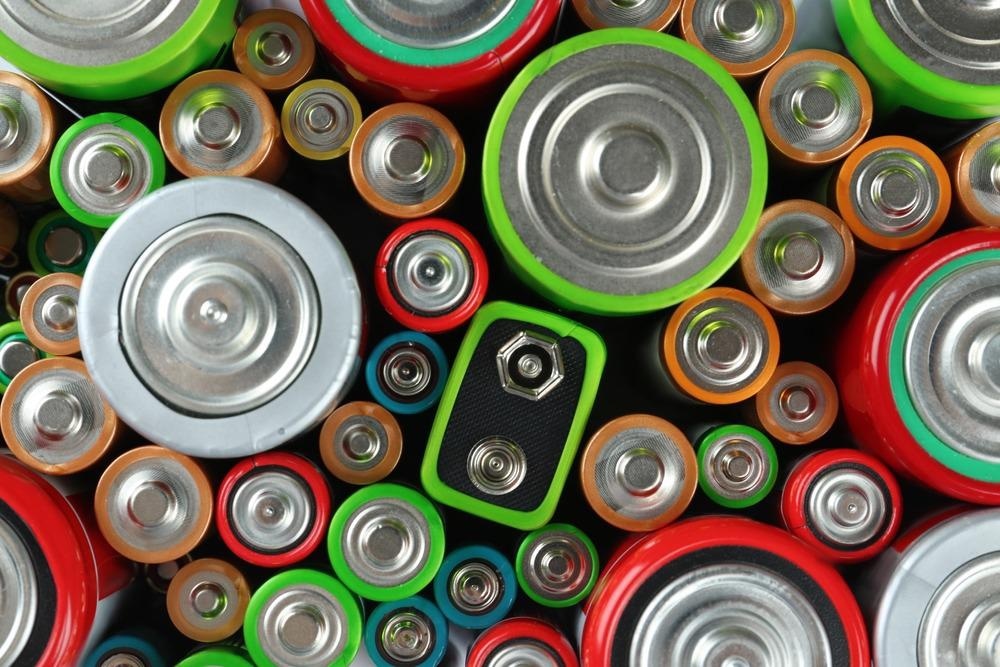A recent paper presented in the Energy Storage Materials journal presents a novel approach to stabilizing the Zn anode in a non-concentrated aqueous zinc trifluoromethanesulfonate electrolyte through the use of a dimethoxyethane (DME) additive.

Study: Reshaping the electrolyte structure and interface chemistry for stable aqueous zinc batteries. Image Credit: New Africa/Shutterstock.com
Metallic zinc (Zn) is affordable, typically very safe, and represents an ideal anode material for use in aqueous batteries. Despite these wide-ranging benefits, Zn can suffer from dendrite growth and side reactions when exposed to water, limiting its applicability and negatively affecting its long-term use.
The application of this additive allowed the researchers to simultaneously regulate both the electrolyte structure and Zn interface chemistry. DME was found to be able to interrupt water’s original hydrogen-bond network while generating a unique Zn2+-solvation structure.
It was also determined that this structure was generated with the co-participation of DME and OTF−, a substance that has the beneficial effect of helping to restrain water-induced parasitic reactions.
Perhaps most notably, it was found that as DFE and OTF- decomposed to form an in-situ organic-inorganic hybrid ZnF2-ZnS-rich interphase on Zn that was actually able to hinder water’s ability to penetrate into the Zn while better homogenizing the Zn2+ plating.
DME molecules were also observed to preferentially adsorb on the Zn surface, helping to inhibit the otherwise randomized growth of Zn dendrites.
The researchers were able to employ a range of analytical methods in the characterization of the batteries’ performance and robustness. The solvation structure of the H2O+DME electrolytes was explored using a series of detailed spectroscopic methods, with Fourier transformed infrared (FTIR) spectra of the hybrid electrolytes revealing the presence of typical components of water and Raman spectra providing insight into the evolution of the electrolyte structure.
A series of molecular dynamic simulations also allowed the researchers to assess the actual and predicted performance of the battery materials.
In terms of performance, the newly developed novel H2O+DME electrolyte was able to empower Zn anodes to achieve excellent cycling stability – more than 5000 hours at 2.0 mA cm−2 and high reversibility - 99.7% Coulombic efficiency over 800 cycles.
This wide-ranging analysis and evaluation allowed a proof of concept to be developed in the form of a pouch-type full battery which included a high-loading mass VOH cathode and a thin Zn anode. This was constructed under ambient air.
The cycling performance and typical voltage profiles of the pouch cell were assessed at a constant current of 84 mA, and it was determined that this cell was able to deliver an initial discharge capacity of 62.4 mAh. This value corresponded to a low Zn-to-VOH capacity ratio of 2.8 an energy density of ∼94.6 Wh kg−1 based on both the cathode and anode – promising performance metrics which were deemed to show improvement over their non-DME-added counterparts. The proof of concept was able to demonstrate a high capacity-retention of 83.5% with ∼100% CE after 100 cycles.
More from AZoM: Analytical Chemistry Applied to Cosmetics
The researchers hope that their findings will help further evolve and optimize the design of efficient, reliable electrolytes for stable aqueous batteries.
This work offers the potential for significant real-world and practical applications, not least due to the ever-increasing demand for reliable, safe, and cost-effective energy storage technologies that will be key to the more widespread adoption of sustainable energy sources.
Rechargeable aqueous batteries based on Zn metal chemistry are widely considered to be promising candidates for this task. Zn represents an ideal anode material due to its relative cost-effectiveness, high theoretical capacity, earth-abundance, and low toxicity.
Mild aqueous electrolytes are also considered to be safer and more environmentally friendly, despite their limitations around water penetration.
To help address these limitations, the paper’s authors were able to propose an efficient and innovative approach to reshaping the batteries’ electrolyte structure and Zn interface chemistry. By addressing the limitations of these otherwise very promising battery materials, their applicability, usefulness, and safety can be considerably expanded.
References
Guoqiang Ma, Licheng Miao, Yang Dong, Wentao Yuan, Xueyu Nie, Shengli Di, Yuanyuan Wang, Liubin Wang, Ning Zhang, Reshaping the electrolyte structure and interface chemistry for stable aqueous zinc batteries, Energy Storage Materials, 2022, ISSN 2405-8297, https://www.sciencedirect.com/science/article/pii/S2405829722000952?via%3Dihub
Disclaimer: The views expressed here are those of the author expressed in their private capacity and do not necessarily represent the views of AZoM.com Limited T/A AZoNetwork the owner and operator of this website. This disclaimer forms part of the Terms and conditions of use of this website.